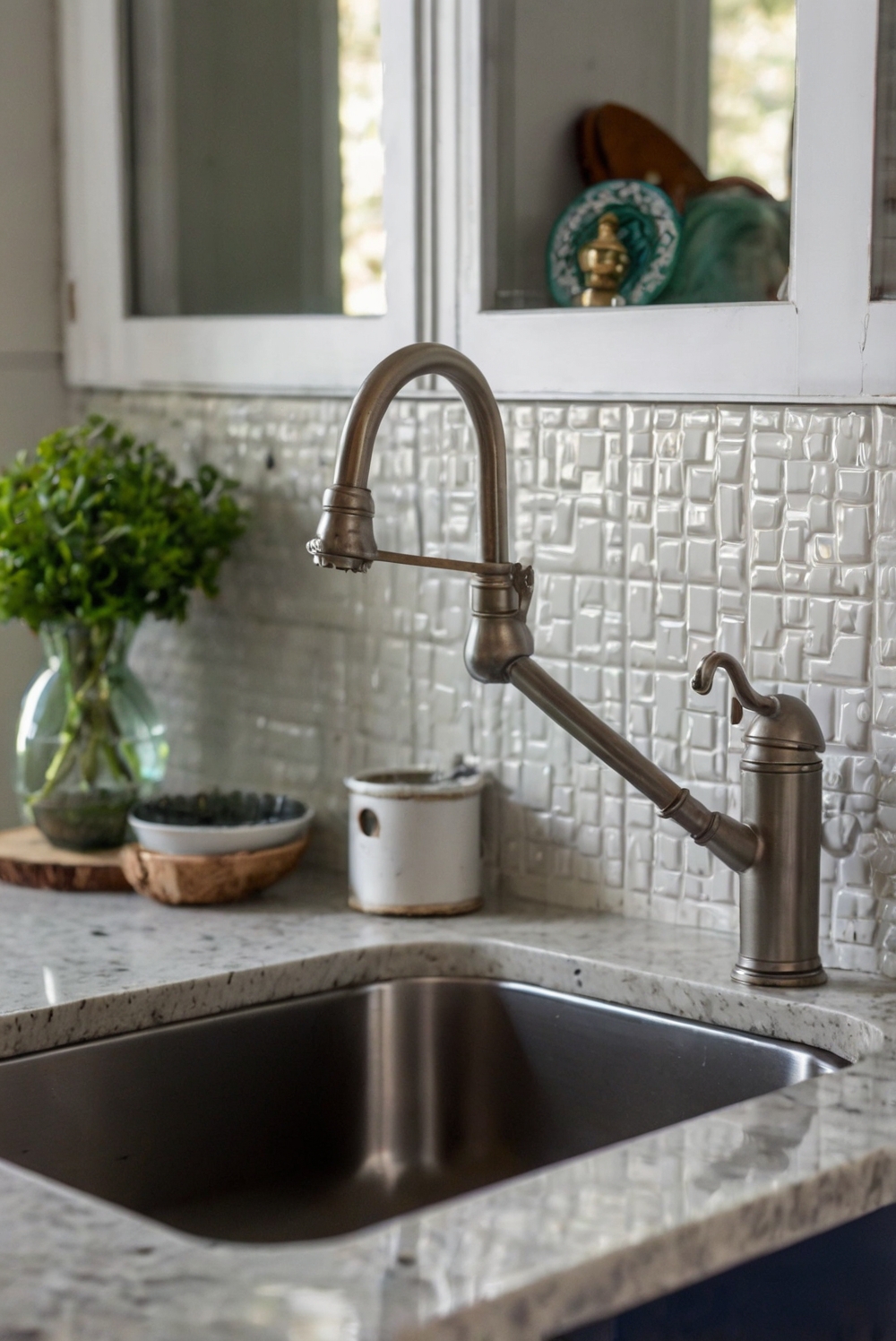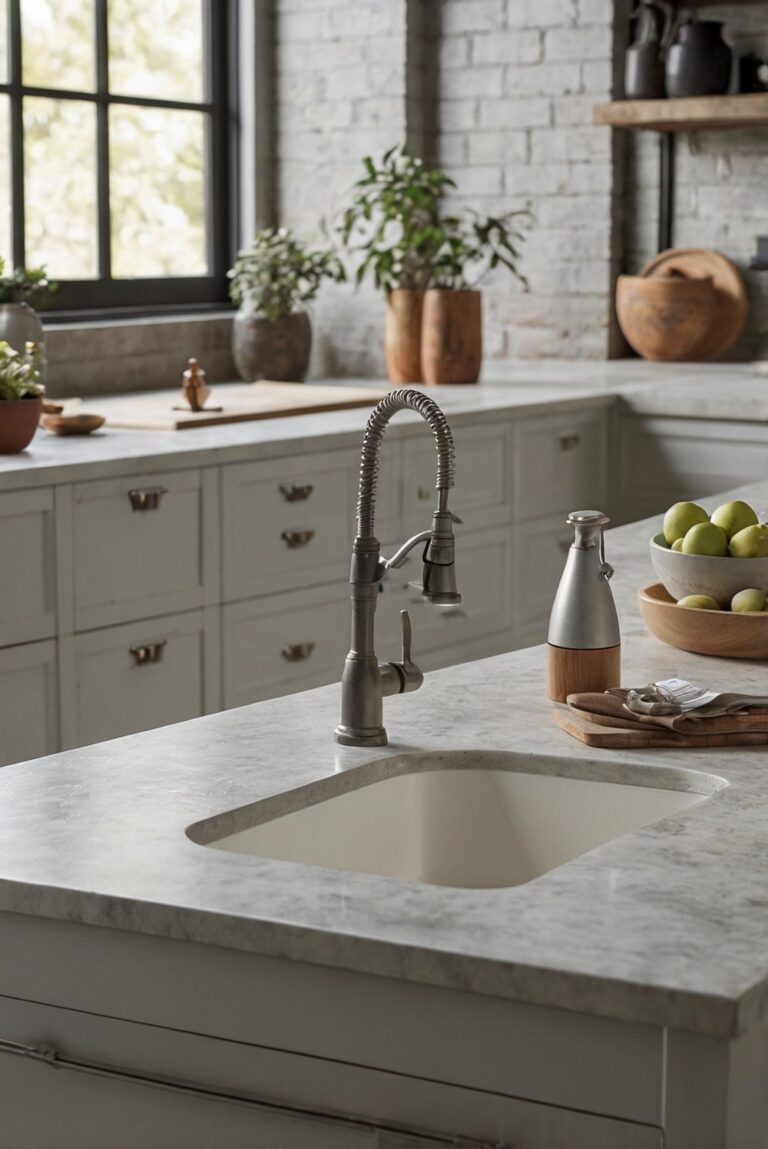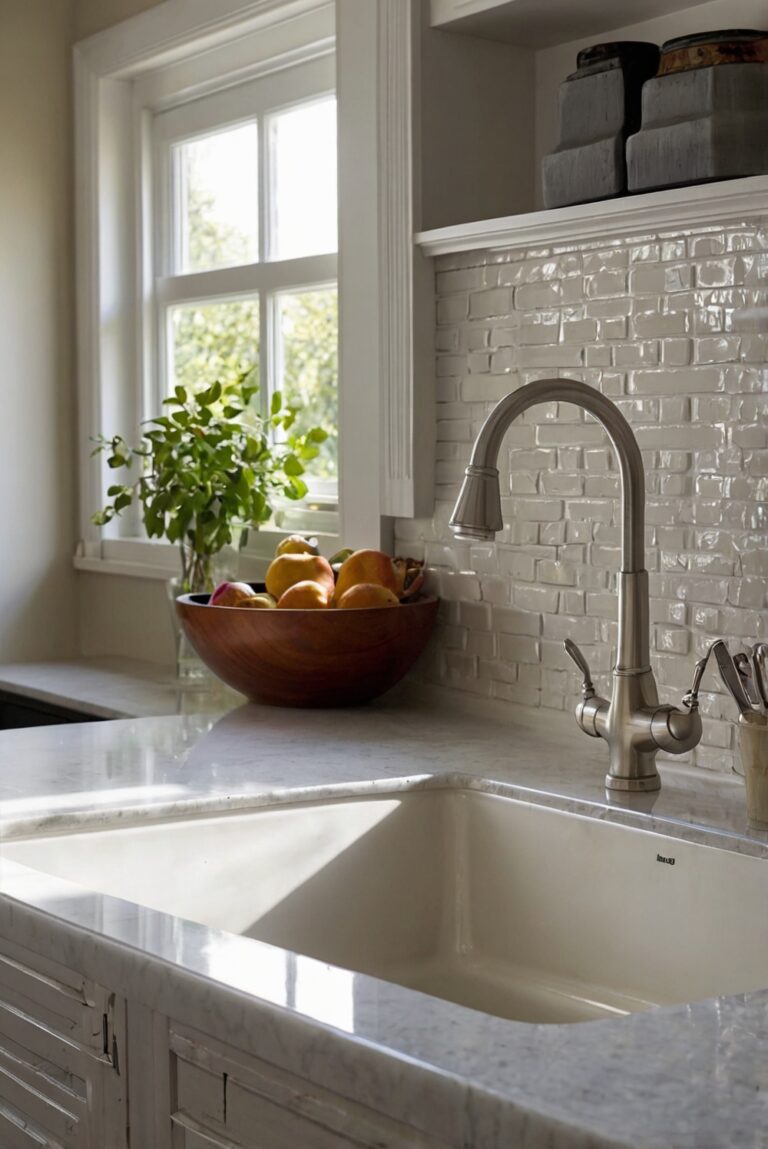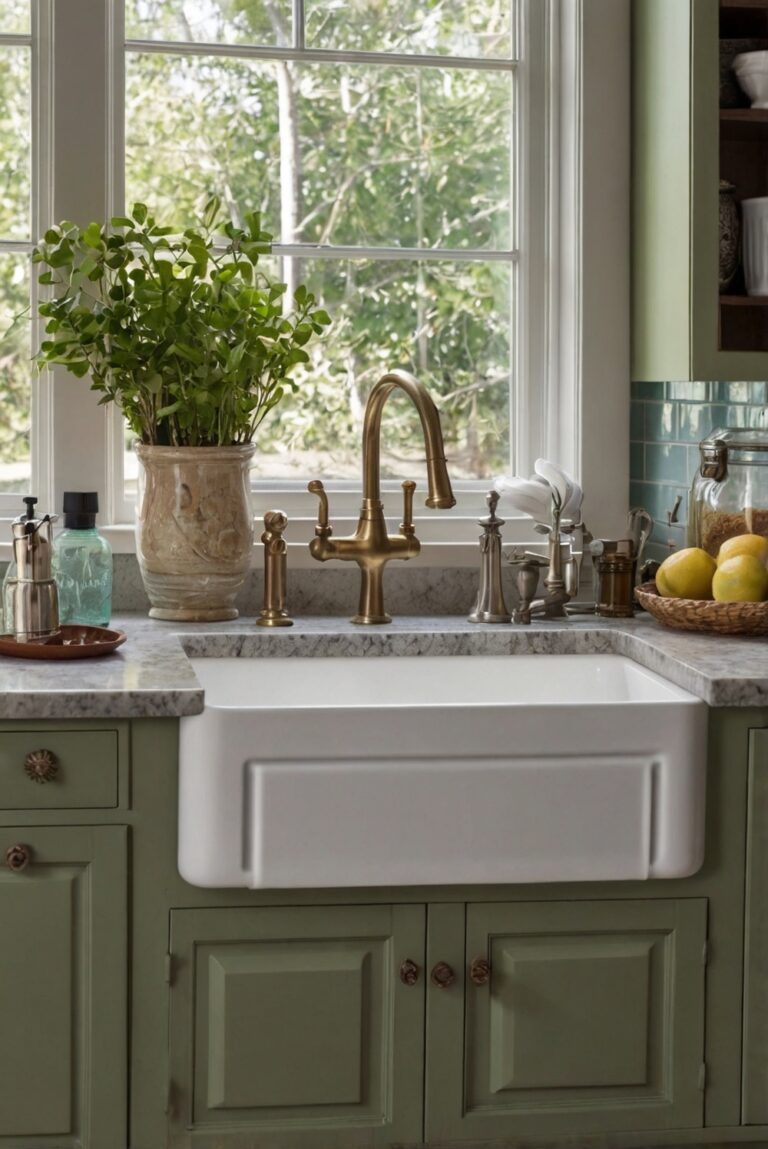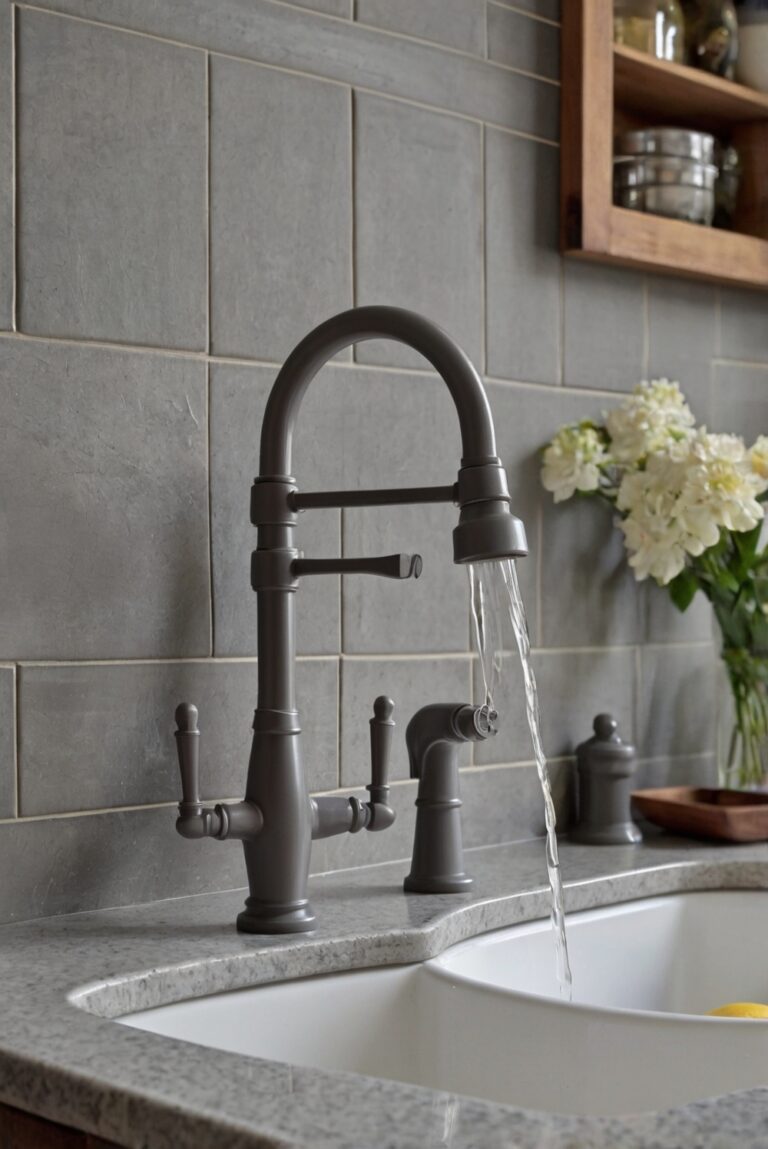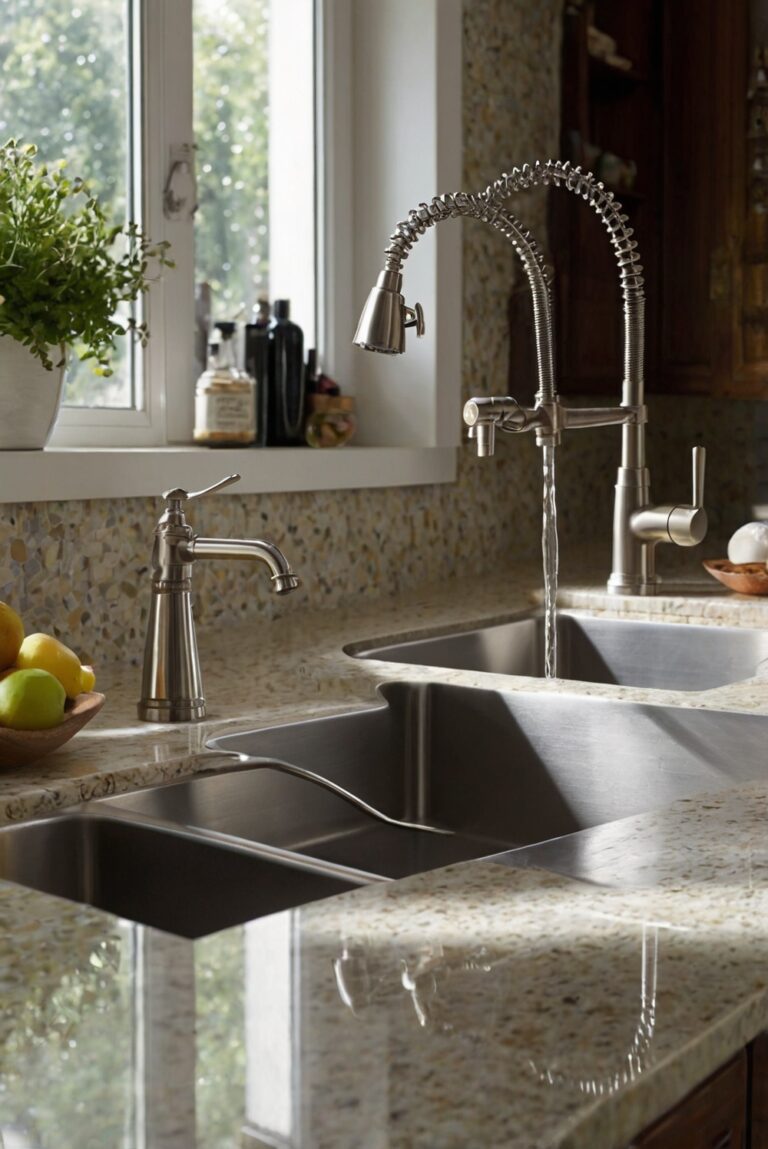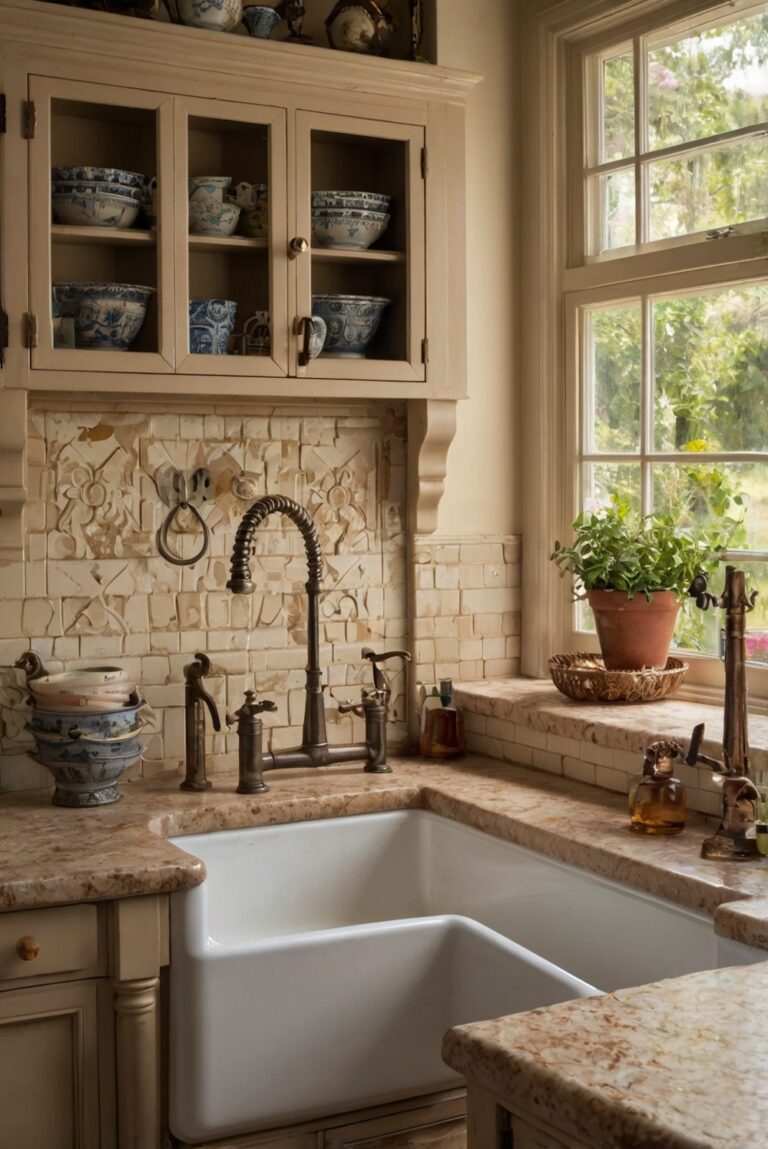Discover the essential steps for maintaining and cleaning your kitchen sink to keep it sparkling and functioning flawlessly every day. Upgrade your daily interior designer routine!
To properly maintain and clean your kitchen sink, follow these steps as part of your daily routine:
1. Start by rinsing the sink with hot water after each use to remove any food particles or residue.
2. Use a mixture of baking soda and vinegar to scrub the sink at least once a week to keep it clean and free of bacteria.
3. Consider installing a sink strainer to prevent clogs and buildup of debris.
4. Avoid using abrasive cleaners or sponges that can scratch the sink surface.
5. Additionally, consider using a garbage disposal regularly to prevent clogs in the drain.
6. It’s also a good idea to periodically check for any leaks or rust spots and address them promptly to prevent further damage.
By following these steps, you can ensure your kitchen sink stays clean and well-maintained, creating a hygienic and functional space for your daily activities.
Maintaining and cleaning your kitchen sink is essential to ensure a hygienic and pleasant cooking environment. Here are some tips on how to properly maintain and clean your kitchen sink:
Regular Cleaning:
– **Regular cleaning** is crucial to prevent the build-up of dirt, grime, and bacteria in your kitchen sink.
– **Use a mild detergent** and warm water to clean the sink.
– **Scrub the sink** with a soft sponge or cloth to remove any food particles or stains.
– **Rinse the sink thoroughly** with clean water after cleaning to remove any residue.
Dealing with Drain Clogs:
– **To prevent drain clogs**, avoid pouring grease, oil, or coffee grounds down the drain.
– **Use a drain strainer** to catch food particles and other debris that can cause clogs.
– **Regularly clean the drain** using a mixture of baking soda and vinegar to keep it clear and odor-free.
– **If you encounter a stubborn clog**, use a plunger or a drain snake to remove it.
Preventing Stains and Scratches:
– **To prevent stains**, avoid leaving dirty dishes or coffee mugs in the sink for extended periods.
– **Avoid using harsh chemicals** or abrasive cleaners that can scratch the sink surface.
– **Consider using a sink protector** to prevent scratches caused by pots, pans, and utensils.
Deep Cleaning:
– **For a deep clean**, sprinkle baking soda in the sink and scrub it with a brush to remove tough stains.
– **To disinfect the sink**, use a solution of bleach and water or a commercial disinfectant cleaner.
– **Don’t forget to clean the faucet** and handles as well to prevent the spread of germs.
Maintaining the Garbage Disposal:
– **Regularly clean the garbage disposal** by running ice cubes and citrus peels through it to freshen and sharpen the blades.
– **Avoid putting fibrous or starchy foods** like celery, potato peels, or pasta into the disposal to prevent clogs.
– **If the disposal gets clogged**, turn it off and use a hex key to manually rotate the blades to clear the blockage.
In conclusion, proper maintenance and cleaning of your kitchen sink are essential to ensure a clean and healthy cooking environment. By following these tips and incorporating them into your cleaning routine, you can keep your kitchen sink in top condition and prevent issues like clogs, stains, and odors. Remember to clean your sink regularly, prevent clogs, and use gentle cleaning methods to preserve the quality and appearance of your sink for years to come.
1. How often should I clean my kitchen sink?
It is recommended to clean your kitchen sink at least once a week to prevent the buildup of dirt, grime, and bacteria. If you use your sink frequently or notice any food particles or odors, you may need to clean it more often. Regular cleaning can help maintain the sink’s appearance and hygiene.
2. What products should I use to clean my kitchen sink?
You can clean your kitchen sink using mild dish soap, baking soda, vinegar, or commercial cleaners specifically designed for sinks. Avoid using harsh chemicals or abrasive cleaners, as they can damage the sink’s surface. A mixture of baking soda and vinegar can be an effective natural cleaner for removing stains and odors.
3. How can I prevent clogs in my kitchen sink?
To prevent clogs in your kitchen sink, avoid pouring grease, oil, or food scraps down the drain. Use a sink strainer to catch food particles and regularly clean it to prevent buildup. Running hot water after each use can help flush out any residue and keep the pipes clear. You can also use a combination of baking soda and vinegar to unclog a slow drain.
4. How do I maintain a stainless steel kitchen sink?
To maintain a stainless steel kitchen sink, avoid using abrasive scrubbers or cleaners that can scratch the surface. Instead, use a soft sponge or cloth with mild soap to clean the sink. To restore shine and remove water spots, you can polish the sink with a mixture of water and vinegar. Regularly drying the sink after each use can help prevent water spots and mineral deposits.
5. What are some tips for deep cleaning my kitchen sink?
For a deep clean, you can remove any debris or food particles from the sink and apply a paste of baking soda and water to the surface. Let it sit for a few minutes before scrubbing with a soft brush or sponge. Rinse the sink thoroughly with water and dry it with a towel. To disinfect the sink, you can also use a mixture of bleach and water, but make sure to rinse it thoroughly to avoid any residual bleach.

